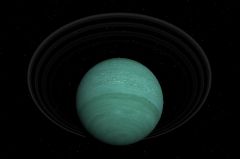Difference between revisions of "Uranus"
(Added Orbiter 2010P1 content.) |
(Added table line item.) |
||
| Line 108: | Line 108: | ||
|- | |- | ||
!Add-on!!Source!!Version!!Author!!Type!!Release Date!!Compatibility!!Wiki article | !Add-on!!Source!!Version!!Author!!Type!!Release Date!!Compatibility!!Wiki article | ||
| + | |- | ||
| + | |[https://www.orbiter-forum.com/resources/celestial-bodies-motion-part-1-4-v2-0-0.132/ Celestial Bodies Motion - Part 1/4 - v2.0.0]||O-F Resources||v2.0.0||cristiapi||Scenery||2 July 2015||*module only|| | ||
|- | |- | ||
|[https://www.orbiter-forum.com/resources/orbiter-2010-p1.5428/ Orbiter 2010-P1]||O-F Resources||100830||martins||Orbiter Download||30 August 2010||Orbiter 2010-P1|| | |[https://www.orbiter-forum.com/resources/orbiter-2010-p1.5428/ Orbiter 2010-P1]||O-F Resources||100830||martins||Orbiter Download||30 August 2010||Orbiter 2010-P1|| | ||
Revision as of 13:52, 10 November 2024
 | This article, about a planet, is a stub. You can help Orbiterwiki by expanding it.
Uranus is the 7th planet from the Sun, the third largest in diameter, and the fourth largest in mass. The planet boasts a ring system and 28 known satellites. William Herschel discovered Uranus on 13 March 1781, although he thought it was a comet for some time. Later, it was realized that it was observed several times by others, but, not recognized as a planet. It is just barely visible in a dark sky. Uranus is unique in that the polar axis is tilted some 97° to it's orbit. Uranus in OrbiterUranus has been a part of Orbiter since the beginning with the release of Orbiter 2001. In Orbiter 2002, the orbital parameters of Uranus was moved to Vsop87.dll. The add-on uranus.zip included storm patterns on the Uranus visuals.
See also
:
| ||||||||||||||||||||||||||||||||||||||||||||||||||||||||||||||||||||||||||||||||||||||||||||||||||||||||||||||||||||||||||||||||||||||||||||||||||||||||||||||||||||||||||||||||||||||||||||||||||||||||||||||||||||||||||||||||||||||||







